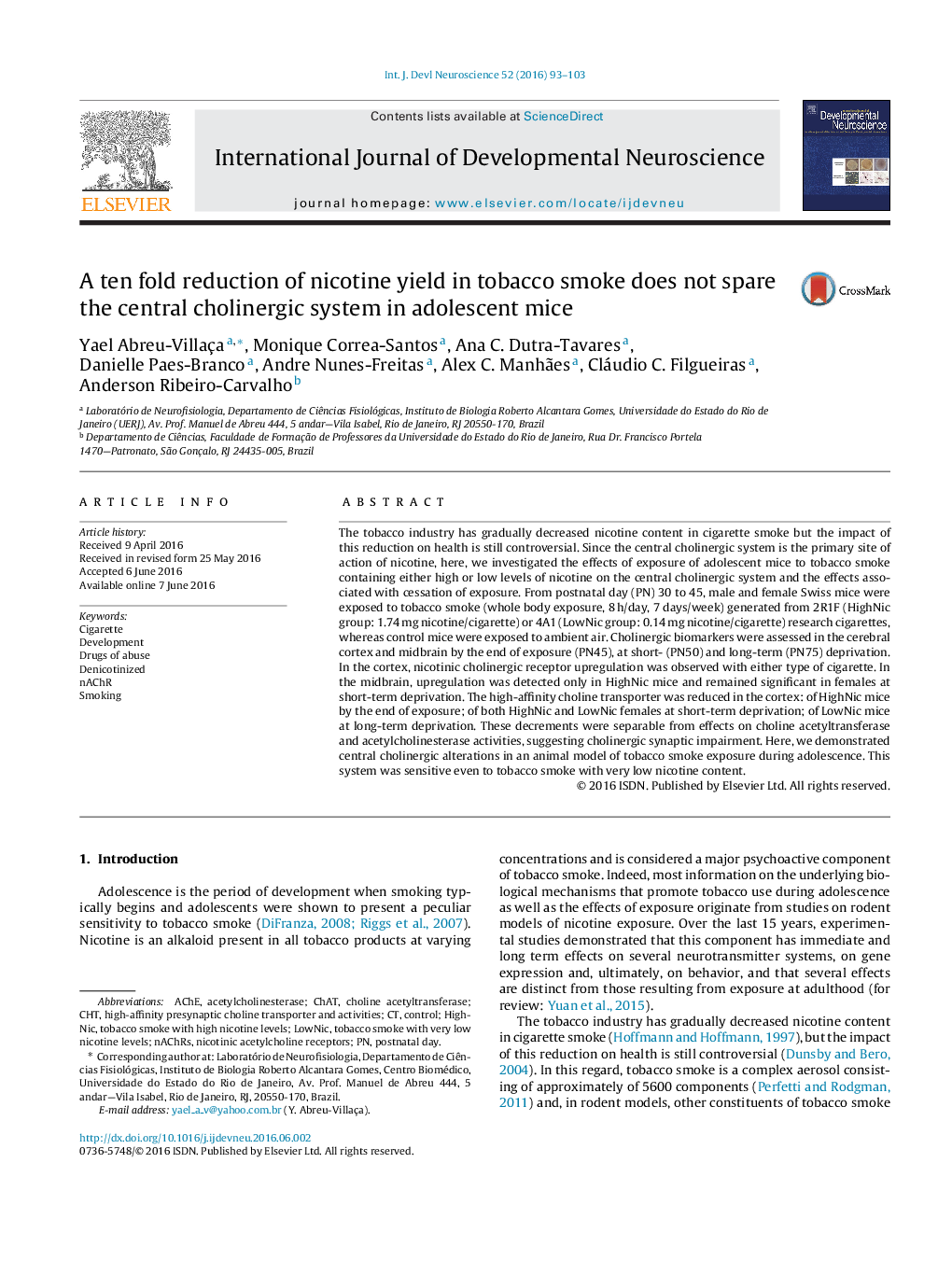| Article ID | Journal | Published Year | Pages | File Type |
|---|---|---|---|---|
| 2785585 | International Journal of Developmental Neuroscience | 2016 | 11 Pages |
Abstract
The tobacco industry has gradually decreased nicotine content in cigarette smoke but the impact of this reduction on health is still controversial. Since the central cholinergic system is the primary site of action of nicotine, here, we investigated the effects of exposure of adolescent mice to tobacco smoke containing either high or low levels of nicotine on the central cholinergic system and the effects associated with cessation of exposure. From postnatal day (PN) 30 to 45, male and female Swiss mice were exposed to tobacco smoke (whole body exposure, 8Â h/day, 7 days/week) generated from 2R1F (HighNic group: 1.74Â mg nicotine/cigarette) or 4A1 (LowNic group: 0.14Â mg nicotine/cigarette) research cigarettes, whereas control mice were exposed to ambient air. Cholinergic biomarkers were assessed in the cerebral cortex and midbrain by the end of exposure (PN45), at short- (PN50) and long-term (PN75) deprivation. In the cortex, nicotinic cholinergic receptor upregulation was observed with either type of cigarette. In the midbrain, upregulation was detected only in HighNic mice and remained significant in females at short-term deprivation. The high-affinity choline transporter was reduced in the cortex: of HighNic mice by the end of exposure; of both HighNic and LowNic females at short-term deprivation; of LowNic mice at long-term deprivation. These decrements were separable from effects on choline acetyltransferase and acetylcholinesterase activities, suggesting cholinergic synaptic impairment. Here, we demonstrated central cholinergic alterations in an animal model of tobacco smoke exposure during adolescence. This system was sensitive even to tobacco smoke with very low nicotine content.
Keywords
Related Topics
Life Sciences
Biochemistry, Genetics and Molecular Biology
Developmental Biology
Authors
Yael Abreu-Villaça, Monique Correa-Santos, Ana C. Dutra-Tavares, Danielle Paes-Branco, Andre Nunes-Freitas, Alex C. Manhães, Cláudio C. Filgueiras, Anderson Ribeiro-Carvalho,
